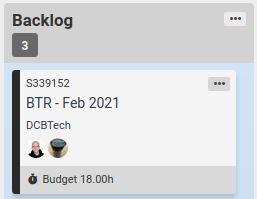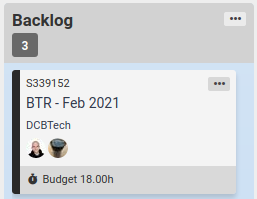The simplest possible Kanban board has columns for Todo, Doing, and Done. This basic layout is used as an example wherever Kanban techniques are taught. It’s an example of a general board, one that tracks any type of work.
Did you know there’s a different type of Kanban board with major advantages for certain kinds of work? Specialized boards are used to visualize only a single type of work but offer enhanced insight into that work.
Read on to learn about the differences between the two types of boards and how specialized boards can be useful.
General Kanban Boards
General boards track work in any workflow in any organization. In fact, we can suggest columns that work almost everywhere:
- Backlog
- Ready
- Scheduled
- Waiting
- In Progress
- Complete
These columns identify who’s responsible for the next step for the tickets in each column. For tickets in Backlog, the triage person needs to do the triage process to move them to Ready. For tickets in Ready, the assigned technician needs to start the ticket to move it to In Progress. For In Progress tickets, the technician needs to finish the ticket to move it to Complete.
The columns don’t directly define what needs to happen to each ticket- especially Scheduled, Waiting, and In Progress. Consider how there’s no obvious ordering between Scheduled and Waiting. Which of those columns is closer to being complete? There’s no clear answer. In fact, the normal process is that tickets skip past Scheduled and Waiting, going straight from Ready to In Progress, and it’s better if they never go to Scheduled or Waiting at all! Also, the In Progress column doesn’t offer any insight into the work needed to complete the ticket.
On a general board, each card represents a unique bit of work to do. Every card could be completely different. For example, tickets on the board could be to reset a user’s password, to investigate and fix a network performance issue, to migrate a server to a new datacenter, or any number of other things. The details of the problem and work to do are defined in the ticket’s own description or task list.
General boards are great for visualizing a team’s workload when there is a lot of variation. In an MSP this type of work typically comes from these sources:
- From a helpdesk that handles user-submitted tickets
- From a project team that handles complex one-off projects
Specialized Kanban Boards
In contrast to a general board, a specialized board tracks work for only a single workflow in an MSP where the same type of work is done over and over for different customers and users. Examples include:
- provisioning a new user
- deploying a new PC
- running a business technology review
- onboarding a new client
- taking a new prospect through a sales pipeline
The columns on a board represent the value stream for the work- the major steps where additional value is created until finally the process is complete and the card is in the right-most column. The columns are specific to each workflow. For example, columns for a business technology review process could be:
- Backlog
- Scheduled
- Pre-Meeting
- Ready
- Followup
- Completion Review
These columns represent the stages in the workflow and the work needed to move the ticket to the next stage. For example, Backlog could contain a ticket representing each client who is due for a review and needs the meeting to be scheduled.
Because the work to do for each stage is represented by the column, and each ticket needs the same steps done before it can move to the next column, the exact details of the work don’t need to be defined in the ticket. The steps to move a ticket to the next column should be documented outside the ticket, such as in a Standard Operating Procedure in a wiki or intranet or as a ticket template in the PSA. In fact, if the title of a ticket is enough to identify the work, the ticket’s description can be completely blank.
Here’s an example of a technology review ticket in TopLeft Kanban:

Specialized boards have a number of advantages over general boards:
- Promoting efficiency:
- By their nature, specialized boards encourage standardization of work, increasing efficiency and reducing errors.
- Each column on a board can be owned by a specific member of the team, encouraging specialization.
- Improving visualization:
- Cards tend to be a more consistent size than cards in general boards, making it easier to judge how much work is in a column or horizontal swimlane
- Progress of work is clear because everything required to deliver value to the customer is represented by one card in an obvious position on the Kanban board.
- Work-in-progress limits and neglected work thresholds can be set to values appropriate for each column. For example, in the technology review example it could be appropriate to consider cards neglected after 10 days in the Scheduled column, but after only 3 days in the Completion Review column. This can be done easily in TopLeft Kanban.
Do you have a workflow that could benefit from a specialized board? Ask yourself these questions:
- Could you ask users to complete a form dedicated to the workflow? For example, for a new user provisioning process, you could collect all necessary information from a form at the beginning of the process.
- Do you already have an SOP for the process, or could you easily write one?
- Could you start a ticket in the workflow from a template in your PSA?
Answering YES means the team doing this work could benefit from a specialized board.
Want to know more about Kanban for MSPs using ConnectWise or Autotask? Get a demo and begin taking back control of your work.
